Beginning with the Simple: Strategy and Authority
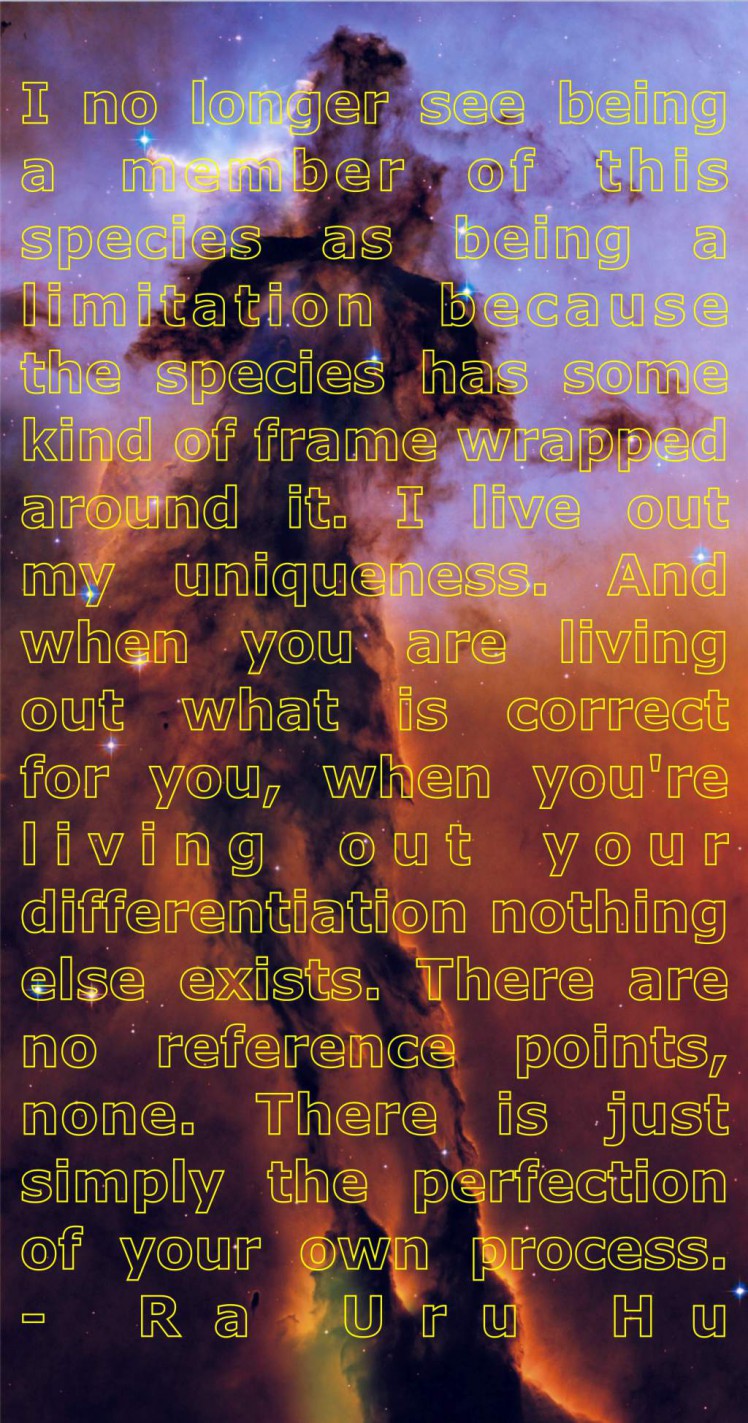

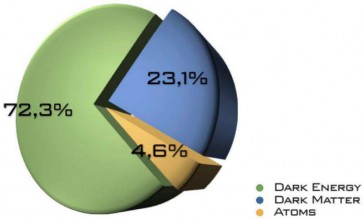
“Now, think about something. Think about what we are, you and me, and all the things that we know, all the places that we know, all the creatures, everything that you can imagine. Think about all the mountains, all the seas, and then begin to think about all the moons and the planets and the stars and the galaxies and the super galaxies and the super clusters and on and on and on. Think about it. You think it fills up everything. You think it’s vast and huge. 4.6%: it’s 4.6% of the totality. It’s nothing.”-Ra Uru Hu, The Human Design System – A Complete Guide
![Gateless-Gatecrashers[1]](https://www.mcha.nl/wp-content/uploads/2014/09/Gateless-Gatecrashers1-133x200.jpg)
Ready, vigilant and alive, you are there—at the Gate.
Then comes the guide who had crossed before. She takes your hand or slaps your face, depending on what you need, and guides you through the Gate.
You turn back, and see that there is no Gate, there is no crossing, there is no you.
And there never was.
ARE YOU READY?

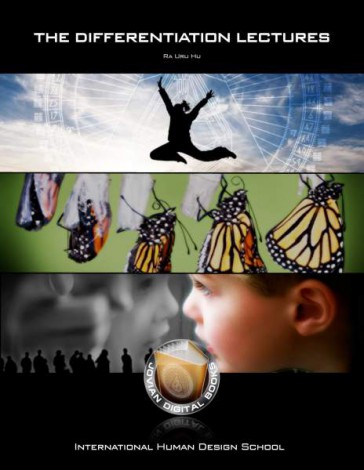
Lecture 1: Nine-Centered Awakening
A New Being and a New Way of Life
Human Design reveals more than any other malaise that humanity suffers from clinging to an evolutionary past. Emerging in 1781, the nine-centered being is revolutionarily different from its predecessor. Ra provides a profound insight into the true nature and mechanics of our kind and the transformation possible through Human Design. This is a transcript of the first in a series of free lectures given by Ra Uru Hu on May 4, 2008.
Lecture 2: The Four Transformations
A Guide to Achieving Difference
This is a transcript of the second in a series of free lectures given by Ra Uru Hu on June 14, 2008 on the stages of Differentiation.
Lecture 3: The Not-Self
What Stands between You and Transformation
This is a transcript of the third in a series of free lectures given by Ra Uru Hu on July 26, 2008.
“Take chai [tea].”
“But Maharajji, I’ve already had chai.”
“Take chai.”
“Okay .”
“Go take kanna [food].”
“Maharajji, I just ate an hour ago.”
“Maharajji wants you to take kanna now .”
“Okay.”
“Maharajji sent these sweets over for you.”
“But I couldn’t eat another thing.”
“It’s Maharajji’s wish that you have these sweets.”
“Okay.”
“Maharajji sent me to give you chai.”
“Oh, no! Not again!”
“I am only doing my duty. It is Maharajji’s wish.”
“Okay .”
“A devotee has just arrived from Delhi with a large bucket of sweets. Maharajji is distributing it. He wants you to come.”
“Oh, my God, I’ll explode.”
“It prasad.”
“Thank you, Maharajji. (Oh, no, not the apples too!) Ah, thank you, Maharajji.”
While many experienced Maharajji’s qualities of timelessness or love at darshans, everybody who came before him felt his concern that they be fed. Often even before you could sit down he would insist that you “take prasad.” People just never went away from him hungry.
I stopped at a gasoline station in Berkeley, California, run by a Sikh fellow. I thought I’d practice my Hindi with him. When he found out that I stayed at the temple at Kainchi, the first thing he said was, “Oh, you belong to that baba. I visited him. He gave me puris [fried bread]. Nobody else gives you food just for nothing. ”
Many of the poor people in the areas around the temple or on pilgrimages came to depend upon the food that was freely given for their survival; but for the rest of us, such excessive feeding and continuous preoccupation with food seemed to indicate that the food represented some thing more.
My first impressions focused on all the food that was present. I had just come down from Nepal, where I had been on a strict Buddhist meditation trip for a long time, and I saw all these people sitting down and stuffing their faces! I thought, “Oh, they don’t know where it’s at. Look at the gluttons!” Then I sat down to eat . . . and in a few days I was stuffing my face. I had never before experienced such a feeling as that. Literally I could not get enough to eat. It was as if I were feeding my spirit. – Ram Dass, Miracle of Love – Stories about Neem Karoli Baba
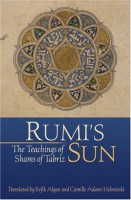
“Don’t be hurt if I speak honestly with my friends. I gave my word not to be hypocritical. Because you couldn’t wait for the word I wanted to say, it was lost. No other words come to mind. If you have something to say, wait until I have finished speaking. These dervish conversations are subtle. If something is lost now, it will be lost; the words that will come later will be different.” – Rumi’s Sun: The Teachings of Shams of Tabriz
One day Buddha is passing through a forest. It is a hot summer day and he is feeling very thirsty. He says to Ananda, his caretaker, “Ananda, you go back. Just three, four miles back we passed a small stream of water. You bring a little water-take my begging bowl. I am feeling very thirsty and tired.”
Ananda goes back, but by the time he reaches the stream, a few bullock carts have just passed through the stream and they have made the whole stream muddy. Dead leaves that had settled into the bed have risen up; it is no longer possible to drink this water-it is too dirty. He comes back empty-handed, and he says, “You will have to wait a little. I will go ahead. I have heard that just two, three miles ahead there is a big river. I will bring water from there.”
But Buddha insists. He says, “You go back and bring water from the same stream.”
Ananda could not understand the insistence, but if the master says so, the disciple has to follow. Seeing the absurdity of it that again he will have to walk three, four miles, and he knows that water is not worth drinking-he goes.
Read more
“If I had to say in a single line what the Gene Keys are, I would say they are a universal language made up of 64 genetic archetypes. If I had to say what the Gene Keys do, I would say they allow you to completely re-envision yourself and recreate your life at a level limited only by your own imagination. The Gene Keys are also a transmission. In Buddhism there is a wonderful word known as ‘dharma’. It is one of those words pregnant with many dimensions of meaning. It points towards the existence of a higher truth or universal law pervading the universe. Because the realisation of the dharma is beyond words, its transmission can only be received through silence and deep meditative absorption. The Gene Keys are just such a transmission. As archetypes they each contain a fractal aspect of the same universal Truth. As genetic archetypes they allow you to resonate that Truth deep within each cell of your body.
This brings us to a very important point that you must know before you enter the living dharma-field of the Gene Keys. Because the Gene Keys are a transmission beyond words, they will not yield their secrets to an intellectual, grasping mind. The more you chase after them with your mind the more frustrated you may become. As archetypes, the Gene Keys are designed to be contemplated, and contemplation demands relaxation and patience. Contemplation is one of the greatest and least understood of the ancient mystical arts and paths.
Read more
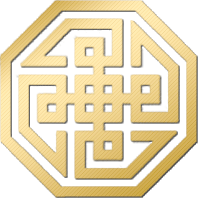
awakens first through the head center, as what I call the “thought of enlightenment.” This is the usual entrance—the idea that there is such a thing as enlightenment, that there is the possibility of a spiritual life or experience and, simultaneously, the interest and motivation to pursue some kind of practice or seek some kind of teaching. The idea of enlightenment and the interest in enlightenment moves us toward the freedom and the experience of the quality of life with its higher values. For most people, that is how it begins, that is how the enlightenment drive wakes up.
However, if the heart is not involved in the drive toward truth, then the enlightenment drive doesn’t have adequate juice or fuel. When the drive wakes up in the heart center, it appears as love, compassion, and the irresistible passion for the truth of inner life. We experience this as love for truth, love for God, love for reality, or as compassion for the suffering of ourselves and others and the desire to do something about it, the recognition of the need to wake up, to be real, to make a difference. All these are different manifestations of service.
the dancers made a solemn march from the sun-dance tipi to the dance circle. The medicine man who acted as intermediary to the Great Spirit walked ahead along a marked trail carrying a painted buffalo skull. This was placed upon the altar facing the sacred pole together with a loaded peace pipe. Before the men underwent their ordeal it was the babies’ turn to have their ears pierced. A space had been covered with sage, and here the mothers sat with their little ones calling to this or that brave and wise man to perform this task. While the men pierced the tiny earlobes with an awl they told of their brave deeds and reminded the parents to bring up the children in the right way-the Sioux way. This was supposed to influence the minds of the children, but not right away, I think, because there was much crying and squealing among the little ones.”- John (Fire) Lame Deer – Seeker of Visions
“Gautam Buddha was the first man to use the words “to be in the middle”, and of course nobody has been able to improve upon the meanings that he gave to the word middle.
He called his path the middle path. The first meaning is that if you can avoid both the extremes, the rightist and the leftist – if you can be exactly in the middle of both extremes, you will not be in the middle you will have transcended the whole trinity of extremes, and the middle. If you drop both the extremes, the middle disappears on its own accord. Middle of what…?
Gautam Buddha’s insistence on the middle is not the middle itself; it is, in fact, a subtle way to persuade you for transformation. But to tell you directly to be transformed may make you apprehensive, afraid. To be in the middle seems to be very simple.
Gautam Buddha played with the word out of sheer compassion. His own term for the middle is majjhim nikaya, the middle path. Every extreme has to exclude the other extreme; every extreme has to be in opposition to the other polarity. The negative is against the positive, the minus is against the plus, death is against life. If you take them as extremes, they naturally appear as opposites.
But the man who can stop exactly in the middle immediately transcends all the extremes and the middle together. From the higher standpoint of the transformed being, you can see there is no opposition at all. The extremes are not opposites, not contradictories, but only complementaries.
Read more
“Addictions are difficult to classify in terms of chakras because different substances produce different states. Even addiction in general cannot be classified in any single chakra. In chemical dependency, the drug of choice gives us important clues about chakra imbalances. For example, stimulants or depressants relate primarily to the energy dynamics of the third chakra, while alcohol creates the merging and lessening of inhibition more closely related to the second chakra. Excessive eating may be an attempt to ground, related to chakra one; a move toward pleasure (chakra two); or blocked anger in the third. But all addictions are initially an attempt to create or deny a feeling or a state of consciousness. The attempt to create a particular state is a compensation, while denial is an avoidance. This gives us our basic excessive and deficient coping strategies.
Read more

Eco-logic books Email Update:
06-Oct-14:
====================================================
Dear eco-logic newsletter subscribers
You may have been wondering why on earth you have signed up to an email that is less frequent than a wunch of bankers foregoing their bonuses. An interesting question – the last newsletter according to my computer was June 2011
I should imagine most of you have gone away, changed emails, stopped reading or have come to believe you can solve all the world’s problems with marmalade – so really this is an email to see who is still out there.
Read more
“We prepare a tray with cups and cream and sugar and some sweet stuff and carry it all back to the couch in the living room, which is positioned to provide an unobstructed view of the turbulent clouds through large west-facing windows.
This conversation is more interesting to me than many because I’m clarifying it for myself as we go along. When the topic is enlightenment, I can speak with the perfect authority of a true master and my only real challenge is how to transmit thoughts and ideas more succinctly. But when the topic is the nature of delusion, the ego, false constructs, and human nature, I’m just a guy with a little experience, a lot of interest, and good seats. Yes, I’ve gone through the transformative process and yes, I remember a good deal from my own before and during periods, but whereas enlightenment is exactly the same for anyone, anytime, anyplace, the journey to it is as unique and varied as there are people to make it.
Read more
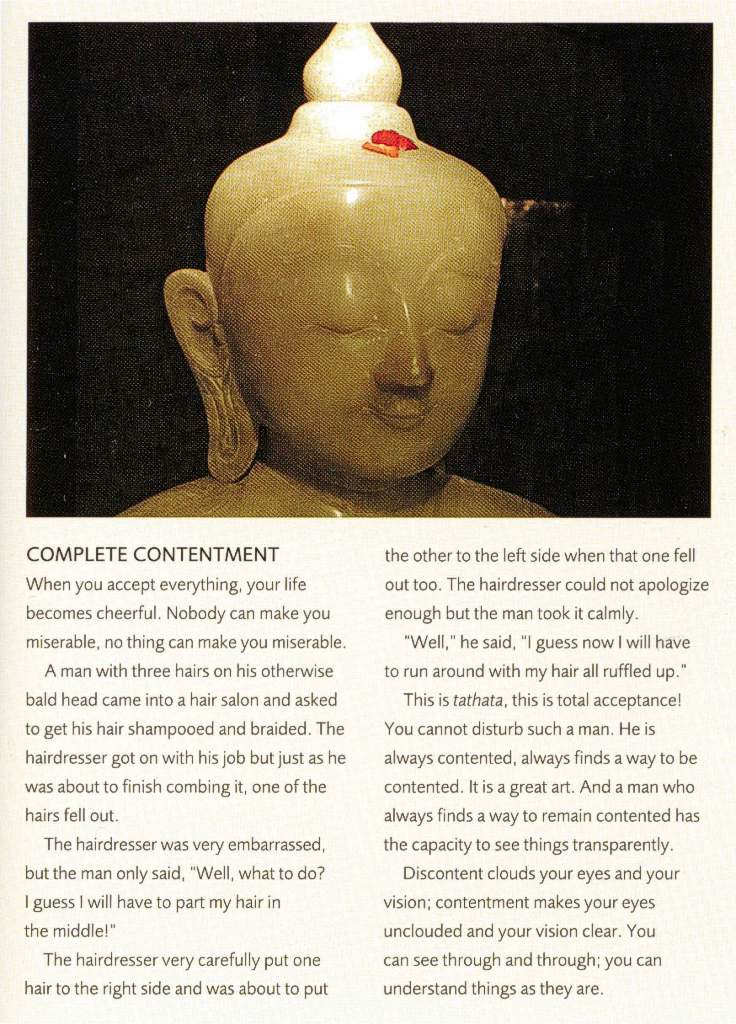
“IV Stage one. The outburst
Again and again in history we find a small nation, treated as insignificant by its contemporaries, suddenly emerging from its homeland and overrunning large areas of the world. Prior to Philip (359-336 B.C.), Macedon had been an insignificant state to the north of Greece. Persia was the great power of the time, completely dominating the area from Eastern Europe to India. Yet by 323 B.C., thirty-six years after the accession of Philip, the Persian Empire had ceased to exist, and the Macedonian Empire extended from the Danube to India, including Egypt.
This amazing expansion may perhaps he attributed to the genius of Alexander the Great, but this cannot have been the sole reason; for although after his death everything went wrong—the Macedonian generals fought one another and established rival empires—Macedonian pre-eminence survived for 231 years.
Read more
Bed after bed, child after child.
Some calm, some thrashing.
Some laughing, some wailing.
Calling for mommy.
Calling for God.
One sits up, eyes open, asking.
I go to him, sit, answer.
He nods, falls back, gone again.
I was once in a bed like them—fevered, deluded.
Now I’m in a chair—I suppose it’s better.
A roomful of loonies.
I return to my crossword puzzle
Until the next one sits up, asks.
– Jed McKenna, Spiritual Enlightenment, The Damnedest Thing
Perhaps what made her a good teacher was the great actress in her past, that oftremarked link to Ellen Terry. A bit of a reach for a relation, but that had never stopped Francesca. The Ellen Terry connection was one of the myths of the Manor.
Amelia took the myth at face value for her student years. But later, when she returned to teach at the Manor, she investigated. The facts were that “the Master,” G. F. Watts, painter of mythological scenes, fell in love with Ellen Terry when she was a mere fifteen, and playing on the London stage. He, forty-seven, considered adopting her but was told she was too old; he asked his friends if he might marry her, but they said she was too young. He kissed her, and she thought she was with child and told her mother they must be married. She wanted, she said, to live with his pictures.
Read more
exists to give order to life, which is chaotic. There are too many events for us to make sense of. Myth selects and arranges so that we may find pleasure in the shape lives take, even a dreadful fate arrived at by predictable means acquiring a certain elegance. Selection, direction, reverence, that is the function of myth. We could argue that love serves the same purpose: love says: here is the one you will attend to, cleave to, believe in. Now go ahead. Forsake all others.
That’s fine for the chosen one, she thought. But what happens to the bits that don’t fit the shapes, to the people outside the circle?
Read more
“Before enligtenment the master prepares the people who are going to succeed him, makes them more articulate, makes them better able to transform the wordless into words, the absolutely silent into song, the absolutely unmoving into dance. Only then will he be able to convey something of help to blind humanity.
Buddha divided his enlightened people into two categories. They both have the same height-there is no quality of lower or higher-they both belong to the same cosmic reality, the fundamental nature. One category is called the arhatas-the arhatas are the ones who become enlightened and remain silent and the second category is called bodhisattvas. They also become enlightened, but their work is to convey something, some device, some hint about their experience to people.
Read more
any psychic process that controls you gets much of its power from being unconscious. Therefore, the first phase in regaining control of your own heart and mind is to make the particular process as conscious as possible. By being curious and willing to be in touch with what you are already experiencing, you are becoming more aware of the psychic activity of self-judgment.
Self-judgment is the constant valuation of yourself according to standards learned in the past. It manifests as attacking and engagement. The more you become conscious of the inner activity of attacking and engagement, the more you realize that almost any mental activity used to stop judgment ends up supporting rather than ending it. This is because the effort to stop the attack is initially motivated by the experience of yourself as the victim of the attack-that is, the child. But as you have seen, acting from that selfimage of the child-victim always leads to some form of engagement. In other words, real disengagement requires disidentifying from the child self-image so that you can be truly effective in stopping the attack.
Read more
Reading some of the questions from some people that are new, I realize and see, that there is not a description anywhere about the Lunar Cycle that makes any sense. Reflectors are told to follow the moon, look at the moon, this and that, but not much is said about what that means.
Now many have found, that the Lunar Cycle is not something to do with our minds, it is something that reveals itself through the application of it, but even that is not really described anywhere. Now I see it, but I might not be the one to fix it.
In the meantime, Dharmen and Leela made a workbook of their Online Class: Embracing The Path of the Moon, A Journey of Discovery through the Lunar Cycle which was a 5 week course and highly recommended.
The Path of the Moon – A Human Design Experiential Workbook
And I provide an individual personalised and extended Lunar Cycle & other Transits Chart with a brief explanation here:
https://www.mcha.nl/transits/
Any Reflector Professional can fill you in, but for now, there is no easy online resource to simply read up on it, which I ponder might also be a ‘good thing’. However, if you have noticed something odd with the Lunar Cycle as presented in ‘The Definitive Book of Human Design’ I have made a corrected version attached here (16 gates missing, 4 double mentions and then 6 repeated, and not starting in Design Moon (but in Design North Node) and there is more off about it than just the sequence since no one ever changes Type, but for now):
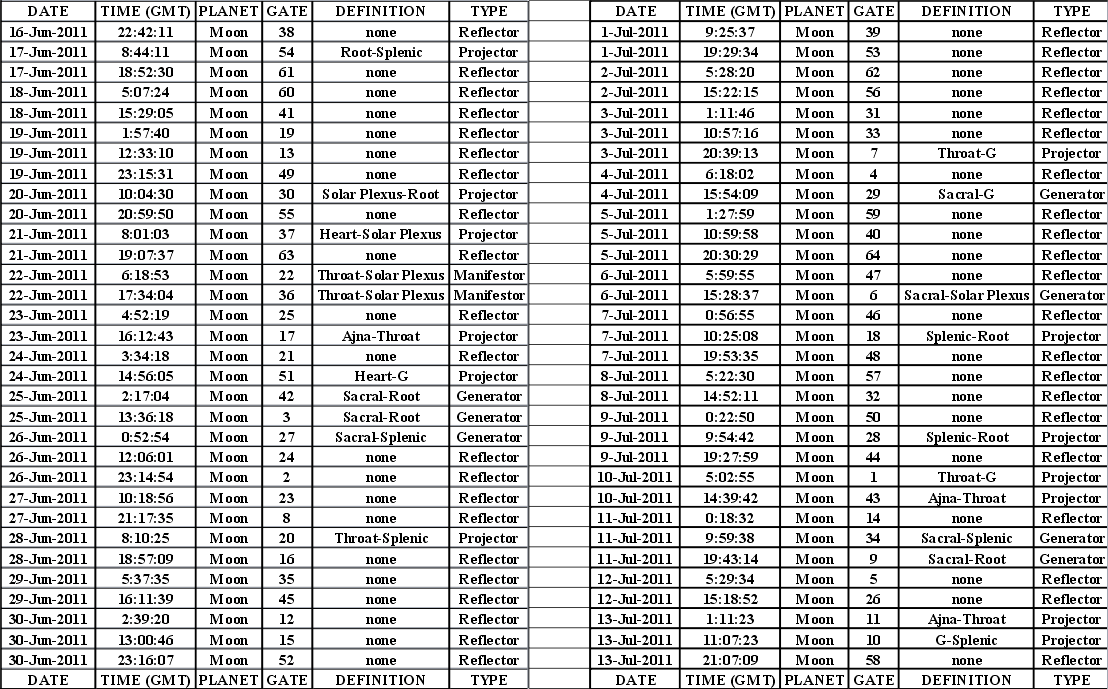

Rather, he wants the technique. I really only have one technique and everybody who comes to the house soon learns what it is from other students, but, oddly, nobody seems to practice it until they receive it from me. I’ve laid it out many times and tried to put it in the public domain for the use of whoever wants it, but it has remained strangely proprietary, as if the only way it can work is if it comes directly from me. There’s really not much to it, but I guess there’s not much to closing your eyes and repeating a mantra or counting your breaths either.
Read more
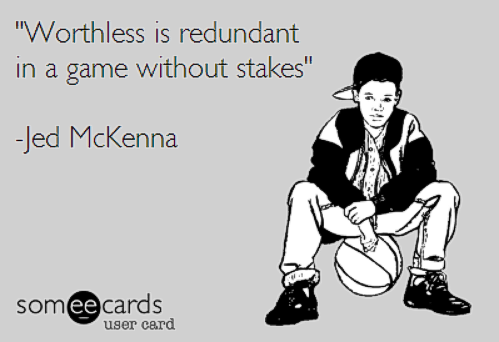

I look at her, trying to gauge the intent of the question. Seeing my confusion, she holds her notes up for me to see. “Right there, question fourteen; ‘What does Jed want?'”
It’s still not clear to me what she means, but the answer is probably the same no matter how the question is interpreted. “I don’t want anything. I don’t want.”
Read more
What?
Can you get Bella back to Los Angeles, have someone take care of her down there?
Probably. Why?
Read more
to judgment is compassion. Because the judge sees only what is wrong and what needs fixing, you know you will get no compassion from it. You will therefore be wary of exposing painful, scary, or negative parts of yourself, for you can be certain the judge will make you wish you hadn’t. Everything you think and feel can be used against you. Its job is to maintain the status quo, to protect you by maintaining a restricted sense of self.
Read more
a young child died; the father had died, and the woman was living only for this child. That young child was her whole life and her only hope; otherwise, there was nothing for her to live for. And the child died. She was almost on the verge of going crazy. She wouldn’t allow people to take the child to the crematorium. She was hugging the child in the hope that perhaps he might start breathing again. She was ready to give her life if the child could live.
The people said, “This is not possible, it is against the law of nature.” But she was in such misery, she could not listen to anybody. Then somebody said, “The best way is, let us take this woman to Gautam Buddha who, just by chance, is in the village.”
Read more
“I don’t know much about what mystics are all about,” she continues, “but that’s the whole thing. No matter how great a mystic guy you are, no matter how great everyone thinks you are, if you’re still in the theater…”
– Jed McKenna, Spiritual Enlightenment, The Damnedest Thing
Read more

A.H. Almaas http://www.ahalmaas.com/
Adyashanti http://www.adyashanti.org/
Jed McKenna http://www.wisefoolpress.com/
Osho http://www.osho.com
Ra Uru Hu http://www.jovianarchive.com
Richard Rudd http://www.genekeys.com
Wayne Liqourman http://www.advaita.org/
Sitara Mittag http://www.astro-sitara.de/engl_advaitavedanta1.html
Jordan B. Peterson https://jordanbpeterson.com/
“Argument is possible between two people who don’t know truth. They can argue till eternity because neither knows. Both are ignorant so they can go on playing with words and logic and quotations and scriptures, but because neither knows, there is no possibility of their coming to a conclusion. At the most what can happen is whoever is more clever and cunning and tricky may defeat the other, and the other will become the follower of the more cunning or more sophisticated. But is this any decision about truth?” – Osho, Buddha; his life and teachings and impact on humanity
Read more
NOTICE IS HEREBY GIVEN: BY CONTINUING BEYOND THIS POINT, the reader acknowledges and agrees that the state of Spiritual Enlightenment discussed herein conveys upon the seeker-aspirant-victim no benefits, boons, blessings, or special powers and bears little or no resemblance to assorted New Age or Eastern varieties widely dispensed under the same name. Orgasmic euphoria, orgiastic bliss, obscene wealth, perfect health, eternal peace, angelic ascension, cosmic consciousness, purified aura, astral projection, pan-dimensional travel, extra-sensory perception, access to akashic records, profound wisdom, sagely demeanor, radiant countenance, omniscience, omnipotence, omnipresence and opening of the third eye are not likely to result. Tuning, harmonizing, balancing, energizing, reversing or opening of the chakras should not be expected. The kundalini serpent dwelling at the base of the spine will not be awakened, poked, prodded, raised, or otherwise molested.
Read more
“Buddhism does not believe in a God; neither does Jainism believe in a God, but they believe in gods. They are far more democratic in their concepts than Mohammedanism, Judaism or Christianity — these religions are more elitist. One God, one religion, one holy scripture, one prophet — they are very monopolistic. But Buddhism has a totally different approach, far more democratic, far more human. It conceives millions of gods.
Read more

a universal one and a personal one. On one side are the spiritual traditions which speak of a divine, universal life of freedom and enlightenment; on the other side is the rest of humanity who wants a certain kind of life—to be married, find satisfying work, have sex and to fulfill myriad other desires and wishes. Why can’t we do both? Why can’t we have this personal life and still be free? When you look at your deepest longing, isn’t that what you want? You want a normal life, and still to be happy and free; not just free on a mountain retreat, but free in your normal life.
http://ahalmaas.com/books/diamond-heart-2-freedom-to-be

“These waves can be the primary emotional chemistry of a person or a person can have a combination of all three.
First, there is a Tribal wave which is concerned with need and touch. This wave ratchets up until it explodes, and then resets to start the process all over again. Imagine a man with Tribal emotional Definition. Read more
“Leonard hardly ate, he eats less and less every day. Leonard seems distant, distracted, I ask him if he’s okay.
I was thinking about my friend Andrew.
Who’s he?
He was my lover.
Your lover?
Read more

“We have a big premiere my parents come my brother comes Leonard comes there’s a big crowd. At the after party people shake my hand pat me on the back give me their business cards tell me the movie was amazing, incredible, great. I smile say thank you but I know it wasn’t very good. It hurts me to admit it, and it hurts me to accept it, my movie wasn’t very good.
Read more